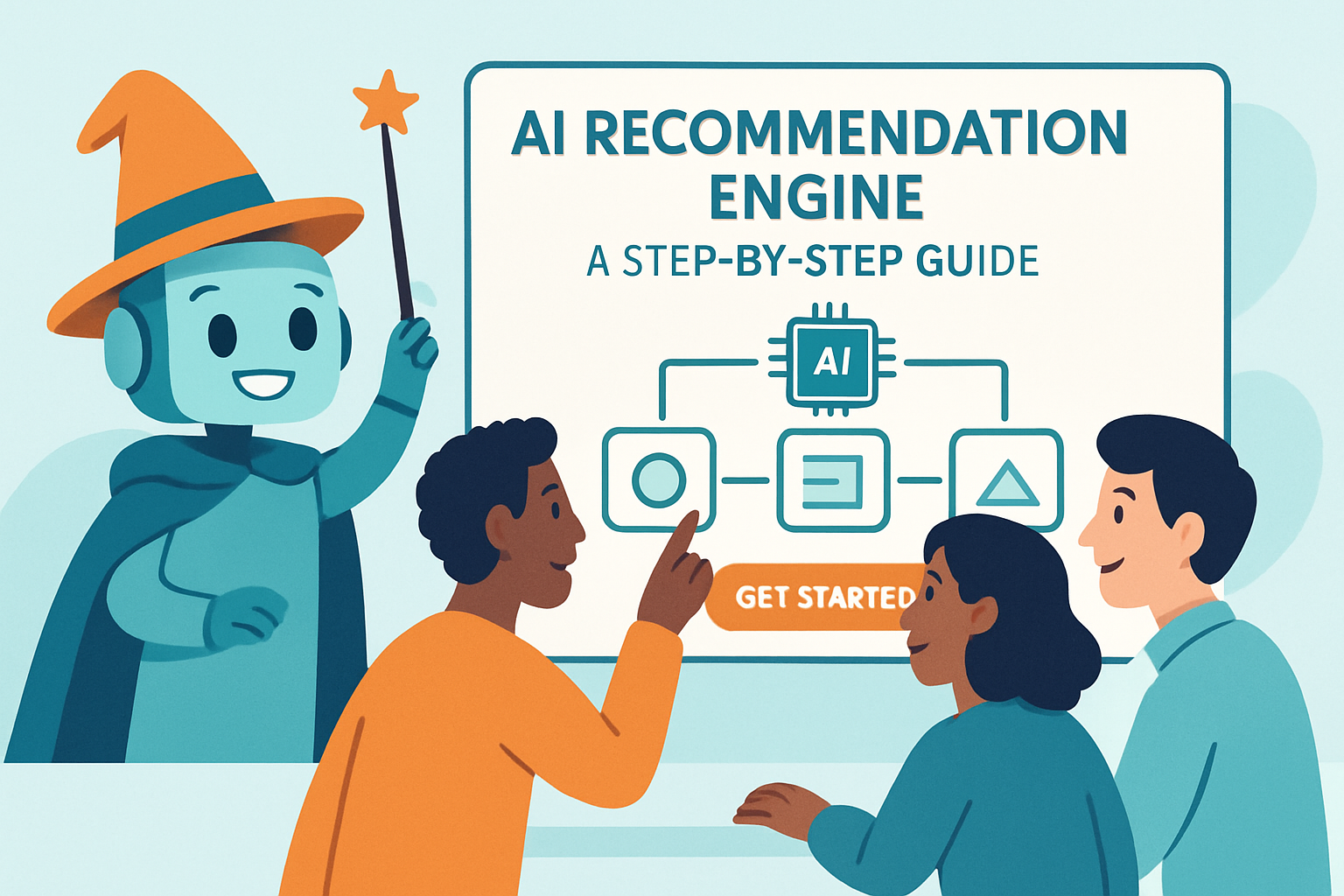AI Recommendation Engine for Beginners: A Step-by-Step Guide
Learn how to build an AI-powered recommendation engine from scratch, even without coding experience. Discover algorithms, data needs, and automation tips.

Build Your Own AI Recommendation Engine: A Beginner's Guide
Want to give your users personalized recommendations? An AI-powered recommendation engine can do just that! This guide breaks down the process for beginners, even if you don't have coding experience.
What is an AI Recommendation Engine?
Think of your favorite streaming service. It suggests shows based on what you've watched before. That's a recommendation engine in action! These engines use algorithms to predict what a user might like based on their past behavior and the behavior of similar users.
AI takes this a step further by using machine learning. The engine learns and improves its recommendations over time as it gathers more data.
Why Build an AI Recommendation Engine?
- Improved User Experience: Offer personalized content and products, keeping users engaged.
- Increased Conversions: Suggest items users are likely to buy, boosting sales.
- Data-Driven Decisions: Gain insights into user preferences and trends.
The Basic Steps to Building a Recommendation Engine
- Gather Data: Collect data about your users and items. This could include purchase history, ratings, demographics, and item descriptions.
- Choose an Algorithm: Select a recommendation algorithm. Popular options include collaborative filtering (recommends items based on similar users) and content-based filtering (recommends items similar to what the user has liked before).
- Implement the Algorithm: Use a platform or library to implement your chosen algorithm. This might involve coding, but no-code options are available (more on that later!).
- Evaluate and Improve: Test your engine's performance and make adjustments to improve its accuracy.
Data Collection: The Foundation of Good Recommendations
The better your data, the better your recommendations. Here are some key data points to consider:
- User Data: Age, location, interests, purchase history, ratings, reviews.
- Item Data: Description, category, price, brand, tags.
- Interaction Data: Clicks, views, add-to-carts, purchases.
Choosing the Right Algorithm: Collaborative vs. Content-Based
Collaborative Filtering: This approach focuses on finding users who have similar tastes to you. If users A and B both liked item X, and user A likes item Y, then the engine will recommend item Y to user B.
Content-Based Filtering: This approach focuses on the characteristics of the items themselves. If you liked a particular sci-fi book, the engine will recommend other sci-fi books with similar themes and authors.
You can even combine these two approaches to create a hybrid recommendation engine!
No-Code Automation with Make.com
Don't want to dive into complex coding? Platforms like Make.com (affiliate link) can help you automate the data collection, processing, and recommendation process with pre-built integrations and visual workflows. You can connect your data sources (like databases or spreadsheets), transform the data, and integrate with AI services to generate recommendations, all without writing a single line of code.
Imagine this: whenever a user makes a purchase, Make.com (affiliate link) automatically updates a spreadsheet. Then, using a pre-built AI integration, it generates personalized product recommendations and sends them to the user via email. It's automation magic!
Implementing the Algorithm: Tools and Libraries
If you're comfortable with coding, here are some popular tools and libraries:
- Python: A versatile language with libraries like Scikit-learn and Surprise for building recommendation systems.
- TensorFlow/PyTorch: Powerful deep learning frameworks that can be used for more complex recommendation algorithms.
- Cloud-based AI Services: Services like Google AI Platform and Amazon SageMaker offer pre-trained models and tools for building and deploying AI applications, including recommendation engines.
Evaluating and Improving Your Engine
Once your engine is up and running, you need to track its performance. Key metrics include:
- Precision: How many of the recommended items are actually relevant to the user?
- Recall: How many of the relevant items are actually recommended to the user?
- Click-Through Rate (CTR): How often do users click on the recommended items?
- Conversion Rate: How often do users purchase the recommended items?
Use A/B testing to compare different algorithms and parameters and continuously improve your engine's accuracy.
Scaling Your Recommendation Engine
As your user base grows, you'll need to scale your recommendation engine to handle the increased load. Consider using cloud-based infrastructure and optimizing your algorithms for performance.
Ethical Considerations
It's important to be mindful of the ethical implications of recommendation engines. Avoid bias in your data and algorithms, and be transparent with users about how recommendations are generated.
Ready to Get Started?
Building an AI-powered recommendation engine might seem daunting, but with the right tools and approach, it's achievable for beginners. Start small, experiment with different algorithms, and continuously learn and improve. And don't forget to leverage the power of no-code platforms like Make.com (affiliate link) to automate the process and focus on what matters most: delivering personalized experiences to your users.
Frequently Asked Questions
What is a recommendation engine in simple terms?
It's a system that suggests items (like products, movies, or articles) a user might like based on their past behavior or the behavior of similar users.
How can a beginner use Make.com for a recommendation engine?
Make.com allows you to connect different apps and services without coding. You can automate data collection, process it, and integrate with AI services to generate recommendations. This allows you to build a functional recommendation engine without being a programmer.
Is building a recommendation engine difficult for someone new to AI/automation?
It can seem challenging, but with no-code platforms and readily available resources, beginners can definitely create basic recommendation engines. Start small, focus on one algorithm, and iterate.
What data is most important for a recommendation engine?
User data (preferences, history) and item data (descriptions, categories) are key. Also, data on how users interact with items (clicks, purchases) is very valuable.
Affiliate Disclosure: Some of the links on this site are affiliate links. I earn a small commission if you make a purchase through them—at no extra cost to you. Thank you for your support!